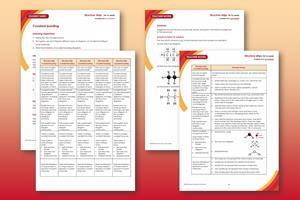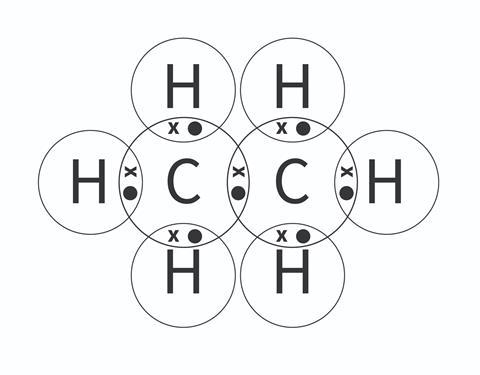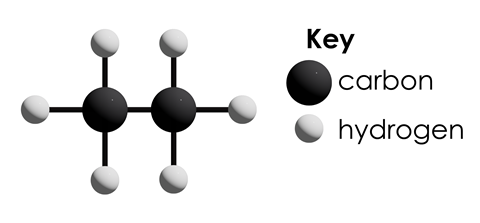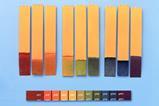Support learners to retrieve information on the diagrams used to represent covalent bonds and their limitations
This resource is part of our support for literacy in science teaching, designed to embed literacy into your curriculum and develop learners’ skills in reading, writing and talking about science and their understanding of scientific language.
-

Download this
Download the structure strips, which are printed five to a page, to support learners to find or retrieve information and write independently.
Find model answers in the teacher guidance.
View and download more Structure strips
Learning objectives
- Define the term covalent bond.
- Recognise, use and interpret different types of diagrams of covalent bonding in small molecules.
- State the limitations of covalent bonding models.
Introduction
Covalent bonding occurs when electrons are shared. There are lots of different substances that have covalent bonding. Covalent bonding can be represented in different diagram types. In this activity learners will gain an understanding of these diagrams and their limitations.
How to use structure strips
Structure strips are a type of scaffolding you can use to support learners to retrieve information independently. Use them to take an overview at the start of the topic, to activate prior knowledge, or to summarise learning at the end of a teaching topic. For more ideas on how to use structure strips with your learners, see 5 ways to use structure strips effectively
Structure strips have sections containing prompts which are sized to suggest the amount that learners must write. Learners glue the strips into the margin of an exercise book and write their answers next to the sections, in full sentences. When learners have finished using the structure strip, they should have an A4 page set of notes and examples.
The strips are printed five to a page and will need to be trimmed to size. Find them on the second page of the student sheet.
Scaffolding
To further support learners to answer the questions you can include a list of keywords or add prompts to the structure strip.
As learners grow in confidence, they may be able to answer the question without the structure strip or attempt the question first and then use the structure strip to improve or self-assess their answer.
Metacognition
This activity supports learners to develop their metacognitive skills in three key areas.
- Planning: the strips provide scaffolding to plan the written response. Learners will decide where to gather information from (textbooks, own notes, revision websites). Ask learners: is the source of information you are using reliable?
- Monitoring: learners are prompted by the questions in the structure strip and can check their answer against the prompts. Ask learners: have you covered all of the questions in the space provided? Do you need to change anything to complete the task?
- Evaluation: learners can self-assess or ask a peer to check their work against the answers. Ask learners: did you achieve what you meant to achieve? What might you do differently next time?
Keywords
Covalent, bonding, limitation, molecule, polymer.
Follow-up question
Learners should answer this question after they have attempted the structure strip. The structure strip activates the required knowledge which learners can then apply to the question.
The photograph shows a small molecule built using Molymods(R).

Give the formula of the molecule and draw the molecule as:
a) A dot and cross diagram
b) A ball and stick diagram
c) A structural or skeletal formula
Answers
Suggested answers for the structure strip activity are given in the downloadable teacher notes.
Answers to follow-up question:
The formula for ethane is C2H6. (check learners have the numbers as subscripts)
(a) Dot and cross diagram:

(b) Ball and stick diagram:

c) Structural or skeletal formula:

Downloads
Covalent bonding structure strips student sheet
Handout | PDF, Size 0.16 mbCovalent bonding structure strips teacher notes and answers
Handout | PDF, Size 0.37 mbCovalent bonding structure strips student sheet
Editable handout | Word, Size 0.49 mbCovalent bonding structure strips teacher notes and answers
Editable handout | Word, Size 0.6 mb








































No comments yet